How To Keep A Gun Safe From Tipping Over?
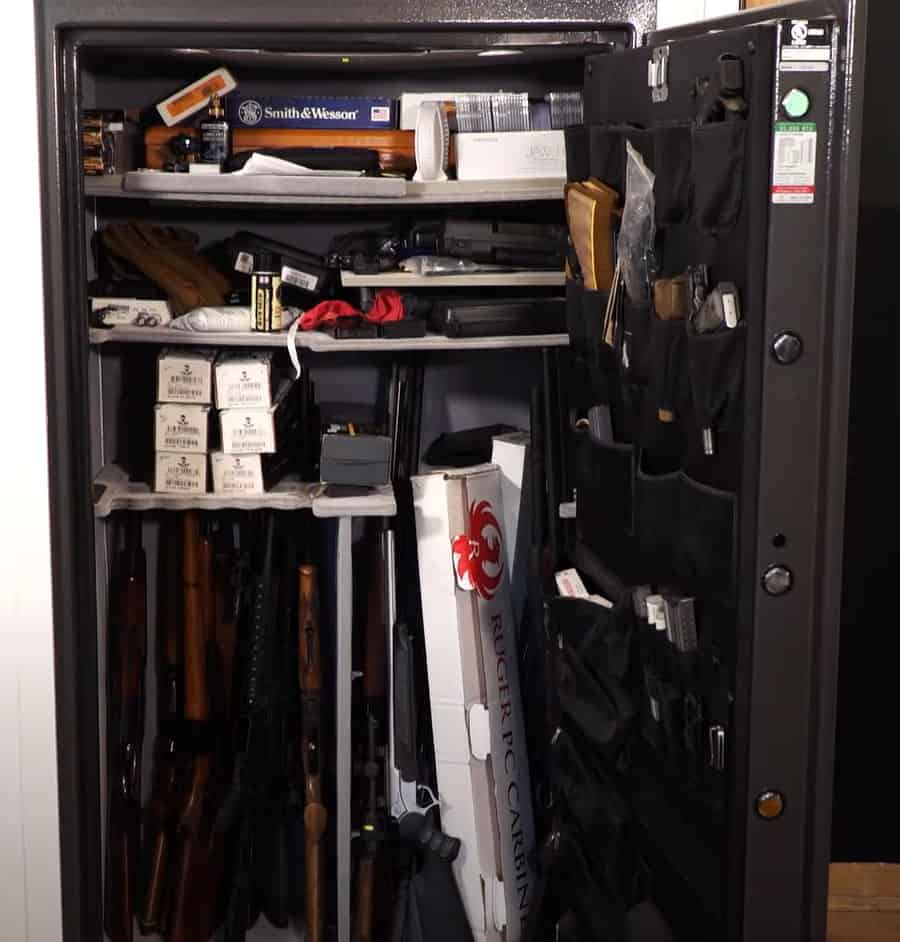
Safes that are on the lighter side are most likely to have the bulk of their weight on the front. The contents of the safe will increase the front load if knives, loaded firearms, and other valuable/hazardous items are kept inside.
The risk of tipping a gun safe that weighs less than 500 pounds is high. If the safe isn’t bolted properly, it becomes even more dangerous. Therefore, you should always make sure your safe is bolted to the floor.
There are many ways to keep a gun safe from tipping over. I would keep it simple and follow these steps:
- The first step is to find a location for the safe. Choose a location that is close to the door and where it will not be in the way of traffic.
- After finding a suitable location, make sure that there is enough clearance room around the safe for movement and opening the door. You want to leave at least four inches of clearance on every side of the safe, as well as six inches behind it.
- The next step is to install a wall-mounting bracket. This will allow you to mount your safe securely on your wall or any other flat surface you choose.
- It’s important that you find a stud when mounting your bracket so that it can support weight and not break off from its mounting point.
- The last step is securing your gun with locks or other safety measures such as trigger guards, cable locks, or biometric locking devices for added security.
This is one of the best ways to prevent a gun safe from tipping over. Plus, there are other advantages of this which I will cover in this article.
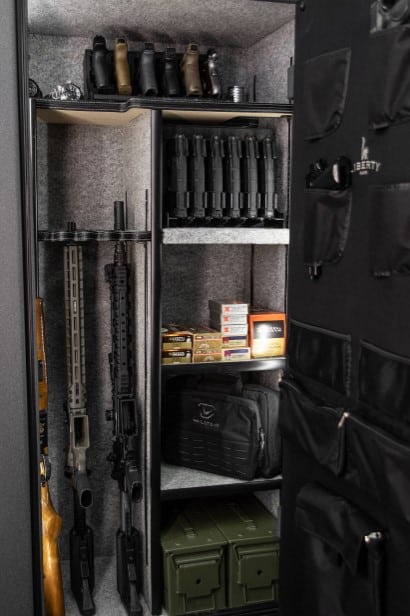
Can A Gun Safe Tip Over?
It is possible for gun safes to tip over. This is more likely to happen with lighter safes. When a safe’s door is opened, it can become unbalanced, which can cause the safe to tip.
In order to prevent a gun safe from tipping, it needs to be bolted to the floor. Likewise, safes should be bolted down to prevent wobbling or tip over.
Bolt the base of the gun safe to the floor if you are worried that it will tip over. You can also anchor some gun safes into a wall with pre-drilled holes in the back.
Both floor and wall-mounted gun safes are available. However, not all models have anchoring holes. Don’t worry, though, as there are other ways to secure a gun safe.
Should You Bolt Down A Gun Safe?
Gun safes should be anchored down for a number of reasons. Even The most secure fingerprint gun safes are bolted down. It is less likely that someone will break into or steal a gun safe that is harder to move.
Adding bolts to gun safe helps prevent it from falling over and injuring someone. However, manufacturers recommend bolting it down to get the most out of your gun safes.
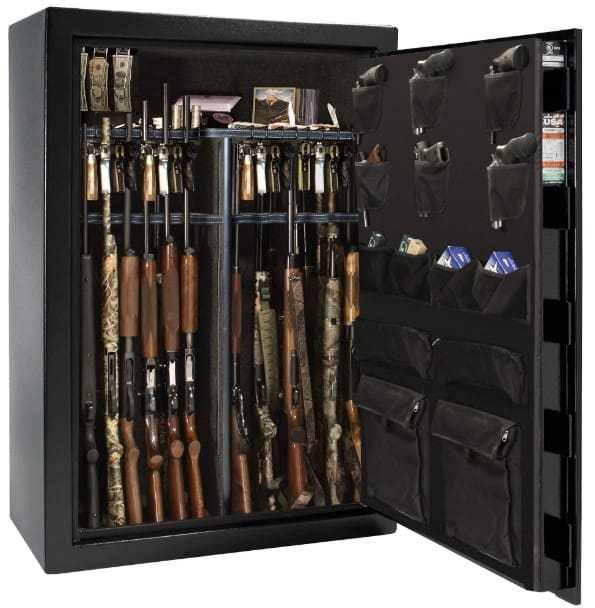
But What If You Can’t Bolts The Gun Safe To The Floor?
In some cases, you may not be able to bolt your safe to the floor. This might be because you are installing it over a post-tensioned concrete surface that cannot be drilled.
You might be unable to drill into the floor of your home because you rent it. However, it could also just be that you do not want to make holes in your flooring. If so, we have some tips for you.
Preparing In Advance
A plan must be in place before the safe arrives to ensure that the installation crew is ready for your safe. Be sure your installers know if your safe cannot be anchored to your floor. Ask your local dealer how you can have the safe installed.
What To Do To Prevent Gun Safe From Tipping Over?
Anchoring your gun safe to the floor is important if you want to keep yourself or your loved ones safe. You can only prevent a gun safe from tipping over this way. The safe will also be harder to tip over and pry open if it’s secured.
A gun safe should be anchored to the ground using anchor bolts. This will ensure that the safe will not move an inch while it is attached to the floor. There are also some other things you can do.
Attaching A Wall-Mounted Safe To A Wall
You can bolt a cheap gun safe to a wall if it cannot be bolted to the floor when renting. It is easier to fix a few small holes in a wall than to replace your carpet or floor when you move.
Unlike many safe manufacturers, Liberty safes and other top safe manufacturers don’t include pre-drilled holes. But most gun safes that are under 300 dollars will have pre-drilled holes on the back.
It is much easier to anchor your safe to the floor than to a wall because of this. Having a professional install your safe is always recommended since they possess the right tools and the necessary knowledge.
For an installation to work, the installation team must drill holes in the wall at the exact point where the studs are located. This calls for stud-finders. You shouldn’t just anchor safes to sheetrock.
Since the screws could easily come out, anchoring your safe to sheetrock is not recommended. Aside from figuring out exactly where the safe should be placed, your installers need to know how to drill through your safe to anchor it into studs.
Gun safes are built tough to prevent drilling through them. You will need a powerful drill bit to drill through steel.
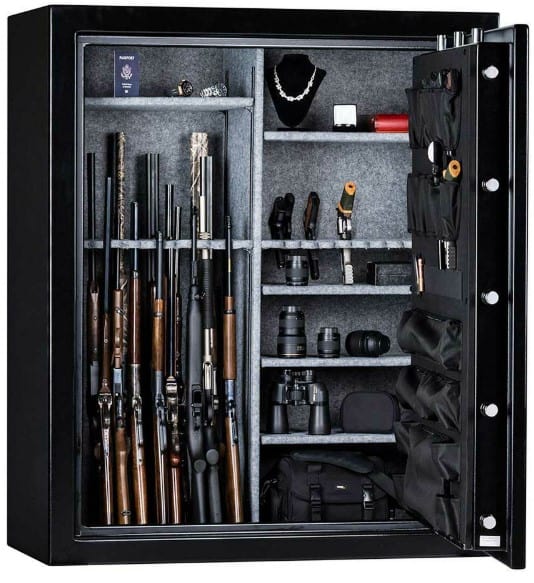
Anchor The Safe To A Hard Floor
A concrete surface can make anchoring a safe difficult. In addition to anchoring the device, you’ll need a hammer drill that can drill through concrete. Some kits are specifically designed to anchor safes.
Also, check to make sure your floor isn’t a post-tension type. Post-tensioned construction uses steel cables to reinforce the slabs, making them able to withstand thousands of pounds of pressure.
Damaged cables can emerge from concrete and cause injuries or property damage. It is possible to tell whether a floor is post-tensioned by the post-tension symbol. However, if there are no post-tensions, you should anchor your safe as follows:
- First, identify the anchor holes that have been pre-drilled for safe anchoring.
- You can expose this by removing the floor caps or paneling.
- Drill four holes in each anchoring corner using a hammer drill.
- If the holes are dusty, clean them.
- Install bolts and tighten them using socket sets.
A Few Things To Consider Before Anchoring A Safe To The Floor
Anchoring a safe involves much more than drilling holes in the floor. Depending on the type of flooring you use and the type of subfloor you have, you will need to anchor it in a particular way.
For example, a basement or crawlspace floor can be made of plywood with some beneath-floor joists for added support. These must be anchored with wood anchors. The safe may also require concrete anchors if it is to be placed in the basement.
Anchoring A Safe Through Stone Or Tile
It is also possible to place your safe on a stone if you have stone flooring. Ensure that the safe’s weight is distributed evenly to avoid cracking the stone. Most stones are capable of supporting the weight of a bedside gun safe.
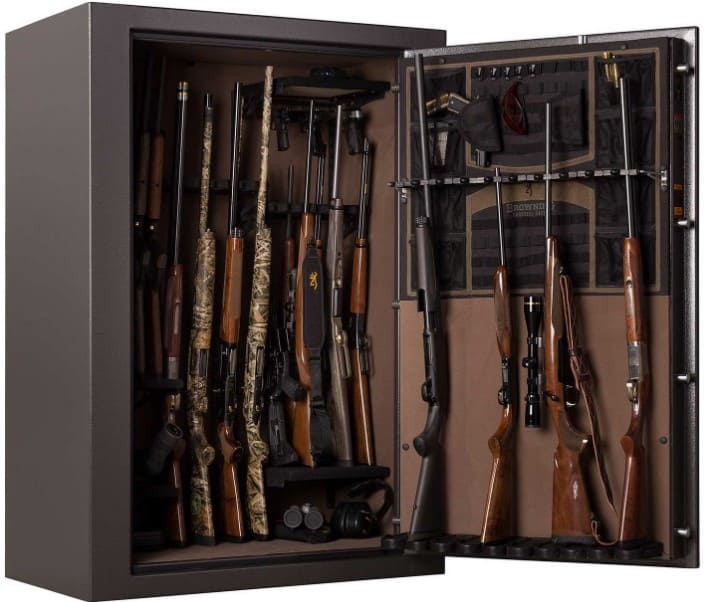
Anchoring a safe to tiles, on the other hand, can be difficult because you might crack the tiles. Therefore, the installer should consider mounting the safe on tiles instead of installing it on the wall.
If Gun Safes Can’t Be Bolted Down, Why Bother?
Let’s look at it from a security perspective. First of all, if it’s a big safe, it’s going to fall over. You just need a dolly, a couple of strong dudes, a hand truck, and a cart to make the safe vanish. A couple of guys can take your safe right out of your house this way.
How Can You Ensure A Safe Level To The Ground?
You can get hurt if you have a safe on a carpet. The safe can fall over when the door is opened. In that case, they will just damage something by swinging the door really hard.
Most safes don’t possess a completely flat bottom unless they are made of steel plate. Furthermore, most floors aren’t level, so you will have problems with the safe rocking when you have it installed.
Experienced gun-safe reviewers like us know that bolting safes down is important, but there is a simple and easy solution. A package of 99 cents worth of wood shims is available at the local hardware store. Placing the shims under the corners of the safe will make it level.
If the safe is against a wall, it will probably be on a tack strip. You’ll need to put multiple shims under the front to make up for the difference. The weight of the safe forces the shims into the carpet and the pad.
The safe will stop rocking if you get it right, and the door won’t swing in any direction. Keep the shims in place for now. Adjust the safe if necessary after it has sat for 24 hours.
Anchoring Your Gun Safe Has Many Advantages
Besides preventing safes from falling over, anchoring systems provide additional benefits. These include:
- Gun safes that are bolted down provide greater security. It is less likely that a safe will be stolen or broken into when it is difficult to move.
- There should be a way to prevent thieves from carrying the safe. With enough time and effort, thieves can open any safe. They usually take the safe away to open at a later date to work in it.
- Ensure the safety of your gun. A safe can be made more secure by adding bolts. Also, it’s easier to break an upside-down safe than one that’s upright.
- You can knock down a bolted door from the side and use the body-to-weight ratio to pry it open if it’s not bolted.
- The bolted-down nature of a gun safe makes it less likely that it will topple over and cause injury.
- To fully utilize gun safes, it is recommended that they be bolted. It is also dangerous to install a safe without professional assistance.
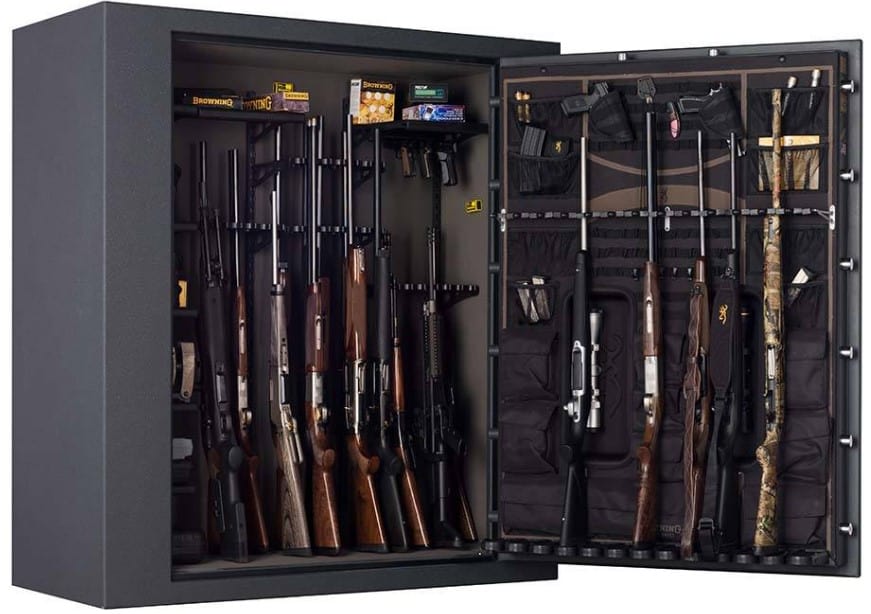
Other Ways To Prevent A Safe From Falling Over
You should consider the following methods if anchoring the safe to the floor is not an option:
- Bolt the safes together. Consider bolting together two large safes if you have two. That way, it will be harder to tip them over.
- Attached to steel by bolts. A large safe can be bolted to a heavy piece of steel or pallet. The safe can be difficult to move this way.
- Bolt it to the wall. Consider mounting your safe on the wall if you live in a rental apartment.
Final Words
It is still possible that your safe could topple over even if your floor underneath it is perfectly level and your safe is perfectly bolted to the ground. Due to the fact that most of the weight sits on the front of a wall mounted pistol safe it can easily be pushed forwards and backward when the door is opened.
You should bolt down your safe as soon as you can rock it with ease when it is open. The safe will take several days to flatten down a carpet if it is installed on it. It wouldn’t be worth waiting that long.
Eventually, you will have to bolt down your safe, no matter how much it weighs. This also poses a security threat. Your safe can be easily tipped over by someone you don’t want to get into your house. They can pry open the safe and steal all of your valuables.
It is best to lag bolt safes into the wall behind them as well as into the concrete beneath them to prevent them from tipping over. Most safes come with pre-drilled holes on the back. Safes can be braced to the studs behind them.
